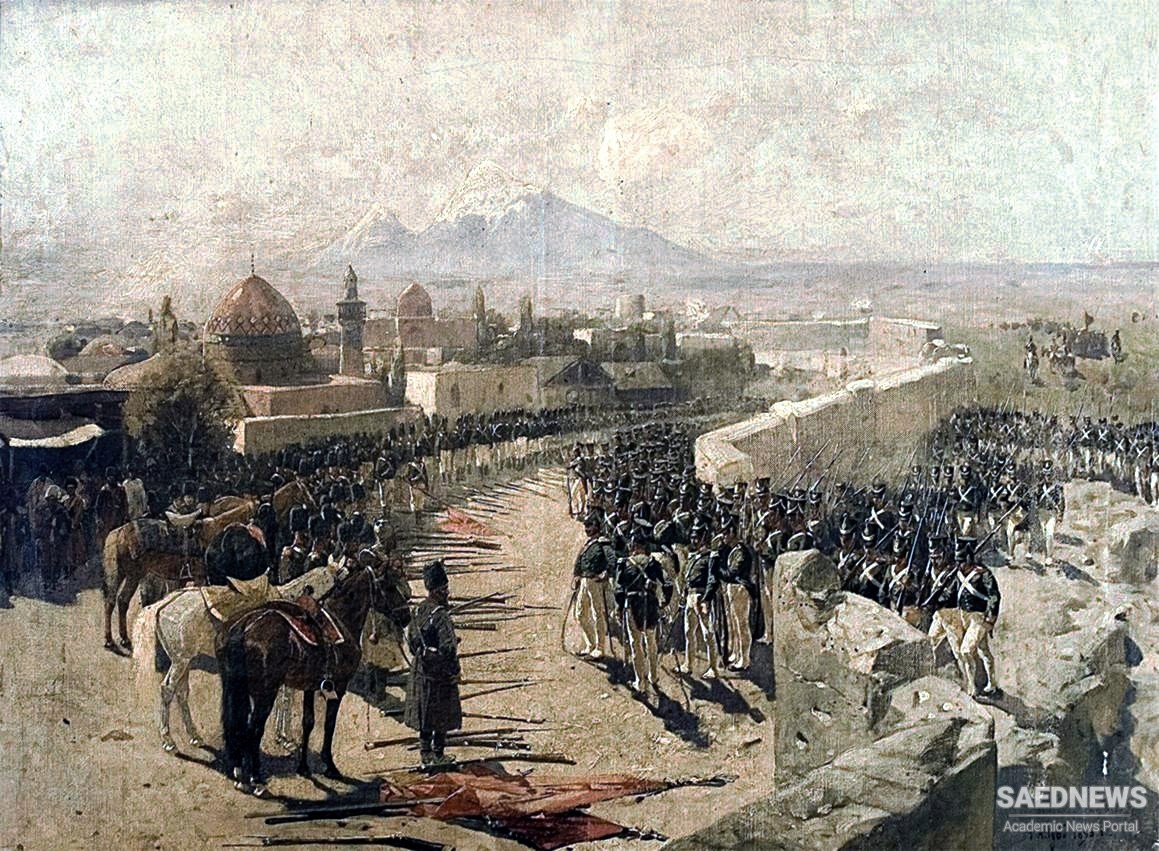Nonetheless, they represent an old established element in Iran. Their history has been intertwined with that of Iranians since antiquity. Armenia was conquered by Iranians on severaloccasions, and population movements from Armenia to Iran have occurred since the Achaemenid period. Like the Jews, they have been living among Iranians and mingling with them for centuries, but their easy access to their neighbouring motherland distinguished them from Iranian Jews, who albeit part of a greater Jewish nation, were much more assimilated and Persianized than the Armenians.
Until the Safavid period, the number of Armenians in Iran was smaller than that of the Jews and Zoroastrians. Under the Saljuks, the Mongols and the Timurids, Armenians had been carried to Iran, but not on the scale of 1603, when thousands of them were deported by Shah Abbas I and settled all over the country. Long before the deportations of Shah Abbas, Tabriz had a sizeable Armenian community. In 1334, there were two Armenian churches in the town, named Surb Astuacacin and Saint Sargis. Considering the distance between Tabriz and Armenia, it is more likely that the Armenians had settled in the town for mercantile reasons, as Tabriz had become a flourishing town under the Mongols. Giosafat Barbaro had met a wealthy Armenian merchant in 1487, while visiting the town. His name was Khwaja Mirak. In 1514, the Ottomans occupied Tabriz and deported the population of the town to Istanbul. Along with the Muslim population, they took 3,000 Armenians. It is noteworthy that the non-Muslims were not the only victims of deportations, and that entire populations living in Iran or the Ottoman Empire were subject to mass relocations.627 By 1574, Tabriz had apparently recovered from the Ottoman aggression, and the Armenians were once again active in the economic life of the town. The Carmelites refer to a very wealthy Armenian merchant whose house had been robbed in that year, and who had had 4,000 bales of silk stolen.
The presence of Armenians is documented in other important cities of 15th century Iran, such as Samarqand and Hormuz. Clavijo had met Armenians in Samarqand whilst the city was the centre of the Timurid empire. In 1490, Hormuz was already a prosperous notable trading centre, where Armenians were noticed by European travellers. These references to Armenians demonstrate that before the advent of the Safavids the Armenians were already playing a conspicuous role in the trade of Iran. The English merchant Arthur Edwards, who was an agent of the Russia company visiting Iran in 1566, complained that it was very difficult to compete with the Armenians and the Venetians in the country, as they were not ready to surrender their commercial privileges. Arthur Edwards also said that the inhabitants of the Armenian village Gilgal alone carried yearly between five hundred and a thousand mules loaded with silk bales for trading purposes.
The first massive deportation of Armenians under the Safavids occurred in 1530. There are not many sources that discuss these deportees, therefore it is difficult to know where they were settled. However, there are many references to the major deportation of the Armenian population to Iran which occurred in 1603-1604. Arakel of Tabriz narrated forcefully this tragic episode, but he adds that the Safavid monarch planned to deport Christians, Muslims and Jews alike. Without any doubt, this deportation was a dramatic event; nonetheless, if the subject is discussed objectively, it is clear that this act of Shah Abbas I was not motivated by religion, but was part of a military and economic strategy. Arakel of Tabriz testifies that before Shah Abbas’ intervention, the Ottoman incursions had prompted the Armenians of four villages to emigrate to Iran. The Ottomans were planning to plunder the area and their main objective was, according to Arakel of Tabriz, Julfa. The Shah did not wish to lose this wealthy region of Caucasus to the Ottomans. Encouraged further by the animosity of the Armenians towards the Ottomans, he led his army into Armenia. Taken by surprise, the Ottomans had only the opportunity to ravage Nakhchevan. The Shah, for his part, devastated the area and enforced his ‘scorched-earth policy’ in order to prevent the Ottomans from controlling the Araxes valley. Moreover, Shah Abbas ordered the massacre of the inhabitants of Nakhchevan, as they were Sunnites. Considering the fate of the Muslims in that region, who were being killed either by the Safavids or the Ottomans according to their denomination, the Armenians were more fortunate.


 The Iranian Jewry: Their Social Dilemmas under Safavids
The Iranian Jewry: Their Social Dilemmas under Safavids














































